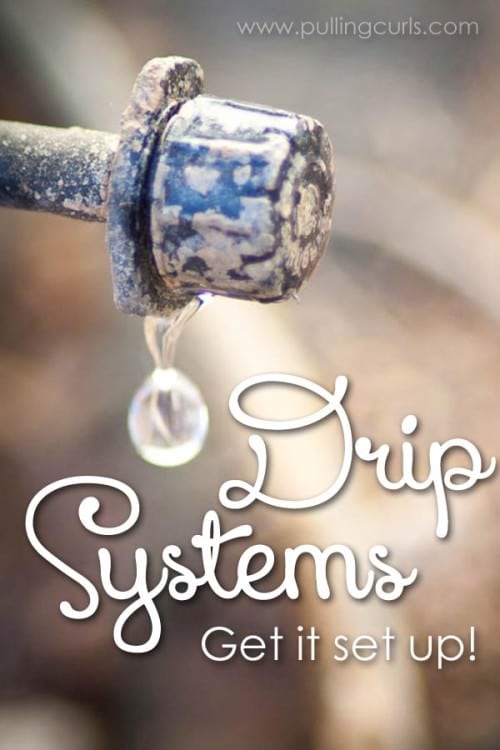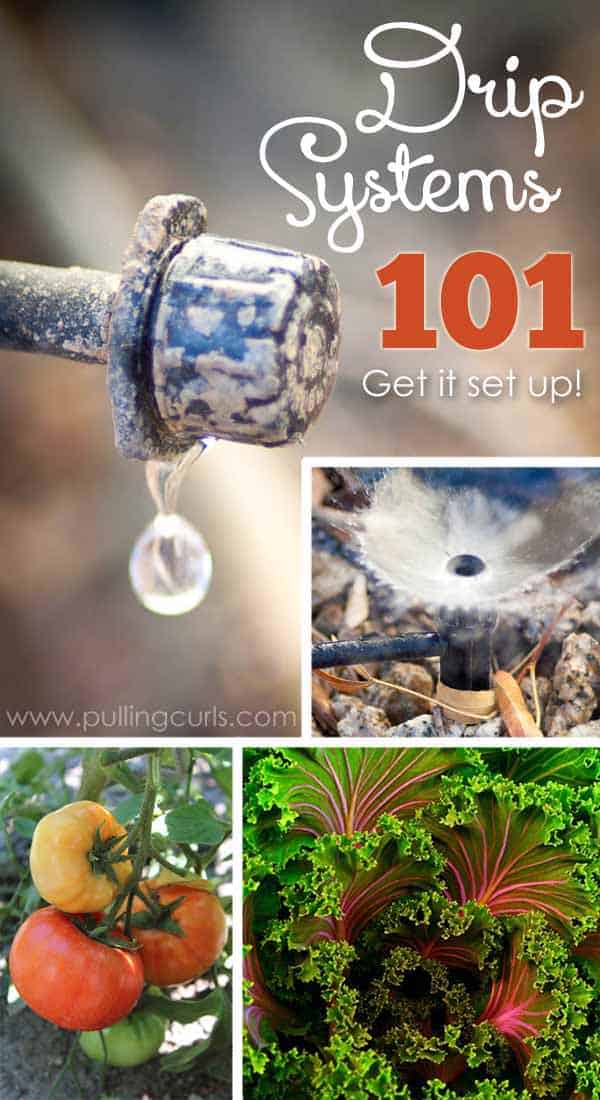I have an unhealthy obsession with each plant getting the exact amount of water it needs, and no more and by NO means do I ever want to water an area that doesn’t have plants. That’s just insane. In about 2008 Drew and I took to installing a sprinkler system at our house in California and I was SO excited to use drip irrigation.

You see, back then we lived in the bay area in California (just south of San Fransisco) and stuff grew SO well there! It was a gardening dream come true (btw, Arizona is NOT a gardening dream come true). Plus, water is extra precious in CA and I wanted to make sure we didn’t waste it.
Since then I have built a personal relationship with the guys at Water World and I have read extensively about the best drip heads online. Frankly, I’m a drip system machine. When my husband was in graduate school I had a fair amount of “alone” time (and by alone, I mean that I would work while the kids would play in our backyard). I installed a whole drip plan in our large square foot garden. It was a thing of beauty. 🙂
What are the benefits to drip irrigation?
- Less water is used.
- The water goes RIGHT to the plant and soaks into the soil, even if it’s hot the water goes deep after a lot of drips, allowing the plant to grow deep roots and get water longer (even when the surface dries up).
- It is easily adjustable — want to change your garden plan, no problem!
- It’s easy to set-up — as you can tell.
Drip systems shouldn’t be used on large areas like a lawn, but other than that I use drippers everywhere else in our yard. I love them!
I wanted to share some of the info I learned from all that in this post. Let’s start with a video. I picture is worth 1,000 words and a video must be worth 10k. 🙂 Action.

So, that gives you the basic of a drip system.
Here’s the things you’re going to for drip irrigation:
Wide Tubing You will want to make sure that this tubing can match up to however you’re going to get water. For us, it’s set-up through our sprinkler system (and therefore needs to match our sprinkler valve), but you can easily use something like this to just set it up to your hose. There’s even timers you can use to put them on a schedule too!
- Hole poker (be careful when you poke holes that you don’t jam through the other side).
- Smaller tubing (you can place drippers along the large tubing ,but I prefer running one stretch of long tubing and using the small tubing to go to each plant). 1/4 inch seems to the standard for this smaller tubing.
Drip heads. There are lots of different kinds as I showed in my video. I’d suggest thinking about what types of plants you’re going to use. I sometimes use a sprayer when I’m growing lettuce, but I really like individual drip heads to larger plants. Those are nice since they already come with a stake. Otherwise you can buy drip stakes (and will need them to prevent kids/pets/wind from moving your system.

Do you have a drip system, or have dripper tips! Tell me in the comments!








Leviticus Bennett says
That’s really nice that less water is used with a drip system. The house I bought had one when we moved in, but my dogs tore it up. I hope to reinstall the drip system now that my sister is moving out and taking the dogs.
Hilary says
Good luck! It so useful!
Andrée-Anne says
If I decide to hide my tube and it’s in gravel, will that eventually make a hole into the tube? Thanks for the info
Hilary Erickson says
Eventually I do think so. You could always put it through PVC?
Afton Jackson says
Your explanation of what drip irrigation can do for plants was very interesting to read. Initially, I was worried that having a vegetable garden would increase our utility costs since it would take a lot of water for them to grow properly. However, now that I’ve read your article, I now know that getting a drip sprinkler system would be a great way to save money while still being able to grow some delicious home-grown crops.
Hilary Erickson says
Glad you enjoyed it!